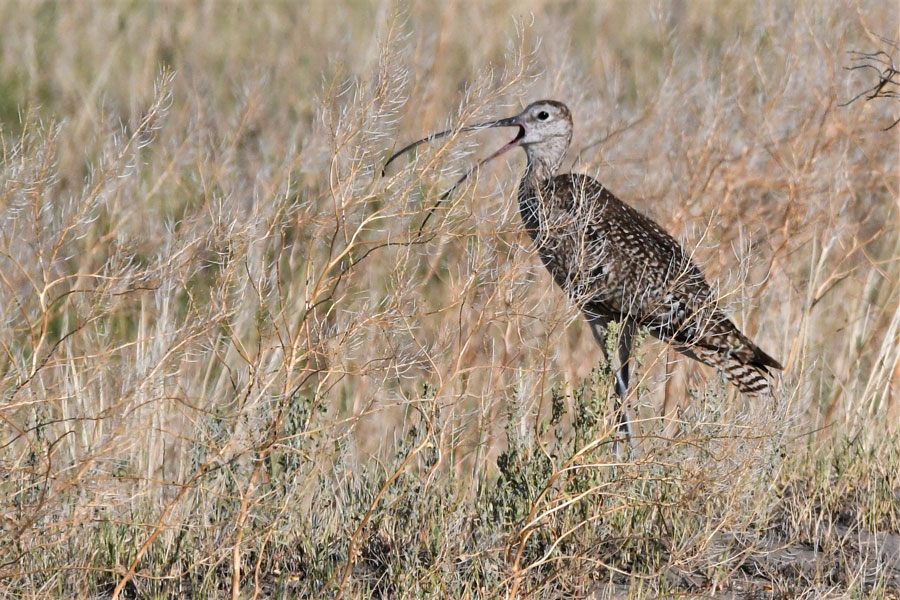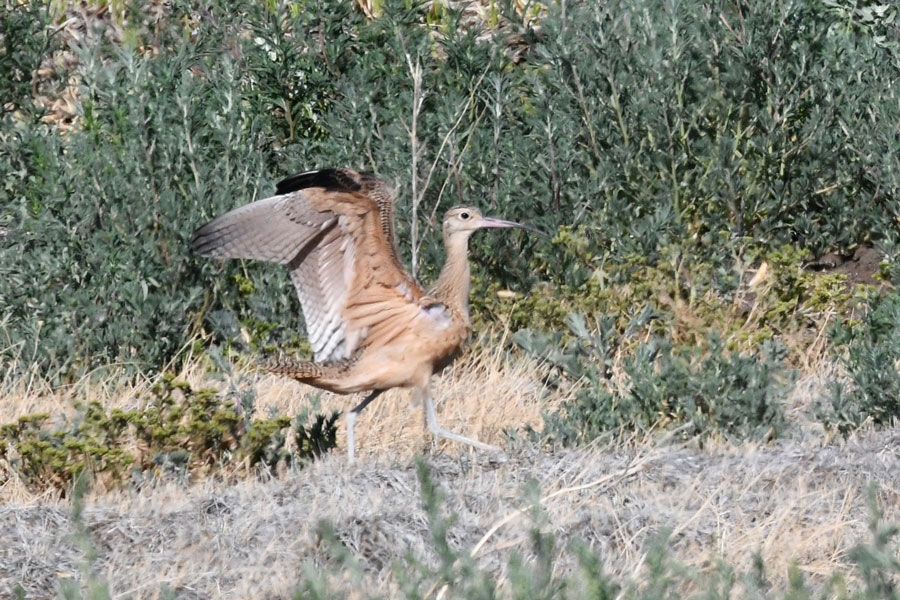Long-bill curlews begin gathering in east Idaho for migration
Published at
I interrupted a family gathering a week ago when I visited the dry Camas National Wildlife Refuge near Hamer. Three fledgling Long-billed curlews ran down the road in front of my truck as I traveled along the auto-route and as I got out to try to get a picture, dad showed up. He yelled and snapped his long candlestick beak at me while the youngster hid in the tall grass.
A little further along the route, I interrupted another curlew family having a feast on the billions of grasshoppers whose population has exploded because the management of the refuge did not fill the ponds this year. They needed the ponds and canals dry so repair could be done on some of the roads, ponds and canals, so the grasshoppers took over. It made it easy for the curlew families to raise their kids on the clouds of the pesky insects.
Long-billed curlews are the largest North American shorebird but when they migrate to Idaho to raise their young, they become more of a grassland creature. Oh, they still love the soft earth around the ponds, streams and lakes along with marshland for probing for worms and other aquatic insects, but grasslands are where they like to nest. Camas NWR, Henrys Lake Flats or the CRP lands between St. Anthony and Ashton are where I have encountered them nesting.

After wintering in Mexico or the Pacific Coast in California, the curlews migrate in March to the Rocky Mountain states where they will find their mate. Many times it will be an old flame from seasons past. They will congregate in loose flocks, walking across moist hay fields probing for worms and flushing insects. I have often seen them near Mud Lake, Market Lake and Hamer, east of Camas NWR marching in unison up and down the fields.
In nearby grasslands, the male will make multiple “scrapes” with a female picking one, placing stones or sticks around it – a bond is formed, and the pair starts creating a family. Both genders will take turns sitting on the four eggs until they hatch. It takes up to 31 days of sitting on the eggs before the chicks pop out.
Both mom and dad help the youngsters find food for two to three weeks before the dad and kids wake up one morning and find that mom has tired being a parent and has flown the coupe. She with other females have headed for Southern California or Mexican coast to live the high life eating baby crabs and basking in the sun. In fact, Candlestick Park Stadium in San Francisco was named after the curlews that spent the fall and winter there.

The dads continue to raise the kids for a month or two before they abandon the kids, flying south to join the females on the beaches. In late August and early September, the kids get together in small groups and migrate south to try and find their folks. The small groups of youngsters are the ones that are now gathering in Idaho to head south.
I find it astonishing how in the world these kids find their way south. Must be one heck of a public school system or social media or a GPS system the dads left with them. Whatever it is, it works for them.
By the way, on Sept. 5, on Labor Day at 2 p.m. I will be doing a presentation on “Owls and Bird Migrations” at the Eastern Idaho State Fair in Blackfoot. That will be followed at 3 p.m. with my presentation on “Hunting Rocks in Idaho.” The presentations will be in the Fine Arts Building.

Living the Wild Life is brought to you by The Healing Sanctuary.


